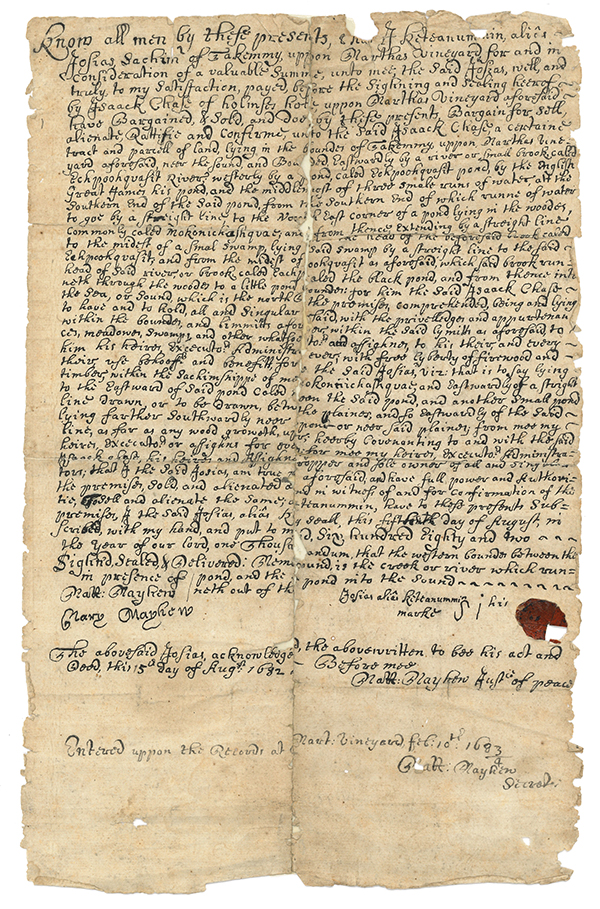Deed to Property in Takemmy

Property Deed
Keteanummin (also known as Josias), Sachem of Takemmy, sold a portion of land in what is now Tisbury to Isaac Chase in 1682. It was not the first parcel he had sold to an English colonist. In 1664, Wampanoag tribal members protested to Thomas Mayhew that too much land was being transferred out of their control, forcing them to move away from areas that they had long been using. With increased land sales there were fewer and fewer places where the Wampanoag could be assured of remaining on their land. By 1720, alarmed by the rate at which the Wampanoag were being displaced, London-based philanthropists bought the rights to Gay Head (now Aquinnah) and established it as a reservation for the tribe.
This conflict continued through the 19th century, as white landowners bought up the lands of impoverished Wampanoag individuals, or accepted them as payment for debts. Sometimes, the takings were more subtle. In 1854, for example, Jemima Easton petitioned the Massachusetts Senate and House of Representatives, stating “…that she herself is pure Indian, that she has occupied land held by her fathers for hundreds of years, but that the neighboring Whites have been gradually encroaching on this property until they have appropriated a great part of it to their own use and thus depriving her in a great degree of her means of subsistence.”
Although the Wampanoag continue to live in all parts of Martha’s Vineyard, the only tribal-owned land remaining is a small area in Aquinnah.
DETAILS
| Date | 1632 |
|---|---|
| Type | Document |
| Ref No | RU132 |
| Thematic Collection | 100 Years, 100 Stories: Island of Immigrants |
